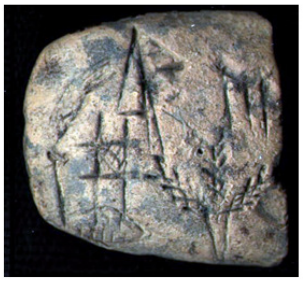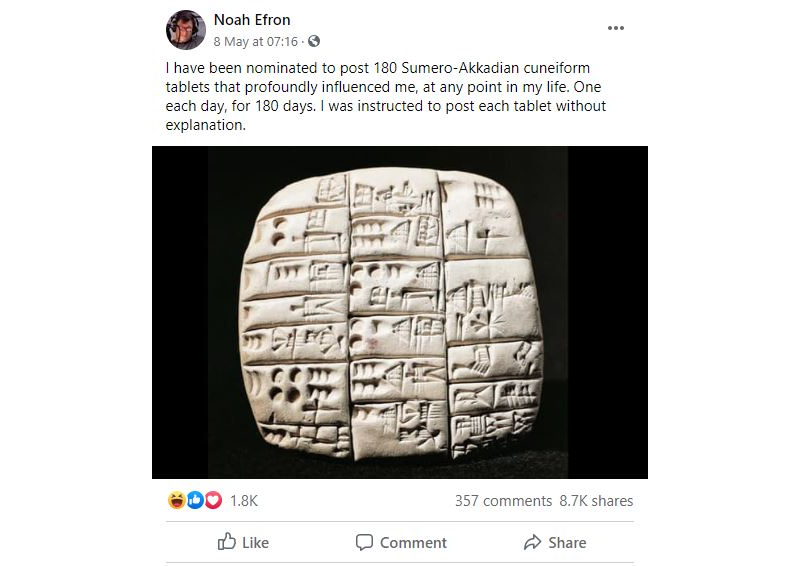For day 1, I thought it would be nice to start with a tablet showing the name of the goddess of scribes/writing, Nisaba. Her name is on the bottom right, in an early form (from the era of Uruk III). More pictogram than later styles of cuneiform, it represents a plant or bundle of wheat.
It was a lot harder than I expected to track this down, but it was worth it for the journey alone. The path took me through online databases named ORACC, ETCLS, CDLI, and various other magical and mysterious sigils that I’m sure will grow familiar over the next six months.
Having made an exhausting number of searches through the aforementioned alphabetti-spaghetti of databases, and after making a note to return to the tale of Inana and Ebiḫ (Nisaba is praised in the final line, but I couldn’t find an image, despite there being many many known versions of the text), I found myself looking at a text in Brazilian Portuguese by Manoel Campos Almeida, Professor Emeritus of Mathematics at Pontifícia Universidade Católica do Paraná, Brazil.
The name Nisaba was synonymous with grain. As Professor Campos has it in Portuguese, grãos. This confused me for a moment since to me, grãos means chickpeas, as in cocido de grão.
This is interesting, since I recall reading that the domestication of grain is closely linked with the start of agriculture, of sedentary communities, and also with the start of record-keeping, probably spurred by the need to collect taxes. Unsurprising then, that the goddess overseeing much of that has a name derived from grain.
Enough for day 1. There will be much more on grain, and indeed taxes as the 180 days tick down.

